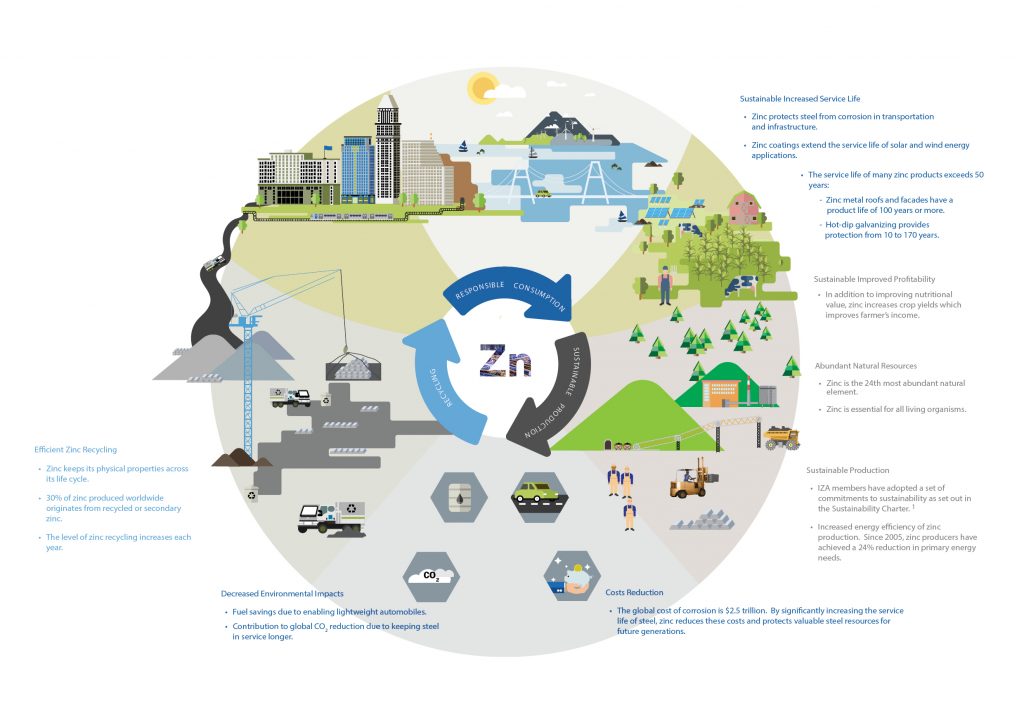Unlike a traditional linear economy (extract, make, use, dispose), in a circular economy, each new object is designed for maximum longevity and future reuse and, at the end of its life, becomes a potential resource, rather than an item of waste for disposal.
Circular economy encompasses more than the production and consumption of goods and services; it aims to disconnect economic growth from the depletion of natural resources.
Given its many attributes, including being essential, versatile, durable, and infinitely recyclable, zinc contributes to a circular economy in numerous ways.
Efficient Zinc Recycling
- Zinc keeps its physical properties across its life cycle.
- 30% of zinc produced worldwide originates from recycled or secondary zinc.
- The level of zinc recycling increases each year.
Decreased Environmental Impacts
- Fuel savings due to enabling lightweight automobiles.
- Contribution to global CO2 reduction due to keeping steel in service longer.
Costs Reduction
- The global cost of corrosion is $2.5 trillion. By significantly increasing the service life of steel, zinc reduces these costs and protects valuable steel resources for future generations.
Sustainable Production
- IZA members have adopted a set of commitments to sustainability as set out in the Sustainability Charter.
- Increased energy efficiency of zinc production. Since 2005, zinc producers have achieved a 24% reduction in primary energy needs.
Abundant Natural Resources
- Zinc is the 24th most abundant natural element.
- Zinc is essential for all living organisms.
Sustainable Improved Profitability
- In addition to improving nutritional value, zinc increases crop yields which improves farmer’s income.
Sustainable Increased Service Life
- Zinc protects steel from corrosion in transportation and infrastructure.
- Zinc coatings extend the service life of solar and wind energy applications.
- The service life of many zinc products exceeds 50 years:
– Zinc metal roofs and facades have a product life of 100 years or more.
– Hot-dip galvanizing provides protection from 10 to 170 years.
For more information, visit the International Zinc Association website.







